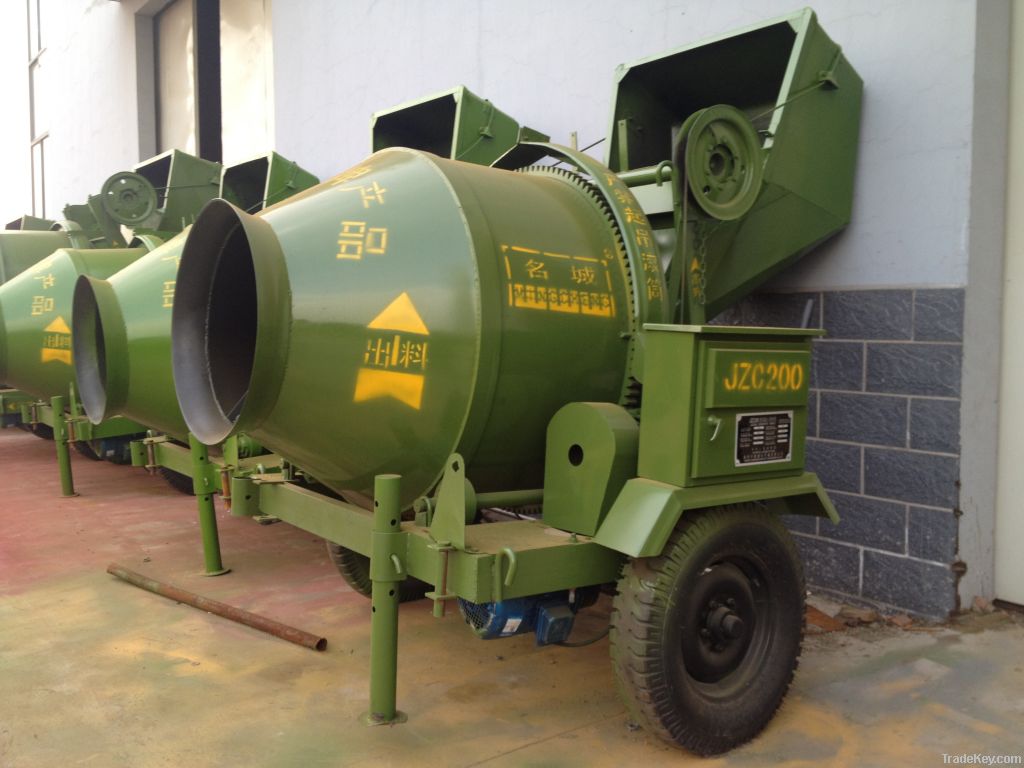A concrete mixer (also commonly called a cement mixer) is a device that homogeneously combines cement, aggregate such as sand or gravel, and water to form concrete. A typical concrete mixer uses a revolving drum to mix the components. For smaller volume works portable concrete mixers are often used so that the concrete can be made at the construction site, giving the workers ample time to use the concrete before it hardens. An alternative to a machine is mixing concrete by hand. This is usually done in a wheelbarrow, however, several companies have recently begun to sell modified tarps for this purpose. In the construction project, the most important question for the rental customer is what capacity mixer they require. This is not the case. Sales personnel should know the material being mixed to recommend the right mixer for the application. As a rule of thumb, plaster/mortar mixers should only be used for sand and cement mix designs that do not use large aggregate. Concrete mixers should be used exclusively for large-aggregate applications. Mixer sizes are rated by bag and cubic-foot capacities, but the best method to size a mixer is by determining its true mixing capacity. The original one-bag or two-bag ratings were based on 94-pound bags of Portland cement, plus the desired amount of sand, water or aggregate. The term has become antiquated over the years due to the widespread use of pre-mixed (aggregate, sand and cement) bagged material. Pre-mixed material is typically available in 40-, 60- and 90-pound bags. We suggest asking the contractor to check the volume of the bagged material. Material suppliers will print the cubic foot capacity on each bag. As an alternative, the contractor could also measure materials using a 5-gallon plastic bucket. The typical bucket holds 0.668 cubic foot of material or water. Choose a design Most mixing drums are fabricated from steel. Since the introduction of polyethylene mixers in the early 1990s, they have steadily gained popularity for rental applications. Polyethylene models are usually slightly more expensive, but make up for the price in reduced cleanup times if the material is left to dry in the drum. Rental companies with fleets of poly mixers are able to maximize rental revenue by reducing downtime and eliminating ongoing arguments with contractors over who has to pay the bill for removing dried material from the barrel or tub. When choosing a towable mixer it’s a good idea to look at the overall design of the equipment. Having a sturdy engine cowling is essential, as most contractors will forget to secure the cowling when leaving the job. This can take a toll on the mixer as it is transported across the jobsite or the highway. Look for mixers that have solid frames and leaf springs to provide smooth towing.
